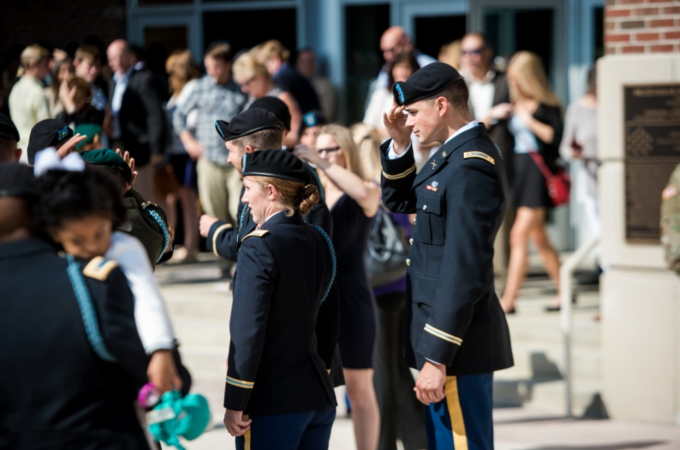“An author cannot, of course, remain wholly unaffected by his experience.”
These are the words of arguably the most influential writer of the 20th century and WWI veteran, John Ronald Reuel “J.R.R.” Tolkien.
In June 1916, the newly commissioned lieutenant kissed his newly married wife goodbye as he boarded the transport to Calais, France. Come July 1st, one of the bloodiest battles in human history took place near the Somme River. That day, his closest friend was killed and Tolkien forever changed.
Shouldering the burden of leadership and the ever looming threat of death, by disease or the enemy, Tolkien carried on. Ultimately, it was Trench Fever that sent him home ten days before the dust settled.

Deemed no longer medically fit for service, Tolkien returned to his passion: writing. The rest is history.
When the second edition of The Lord of the Rings was released, the foreword stated: “The real war does not resemble the legendary war in its process or its conclusion.” Tolkien continued with, “But I cordially dislike allegory in all its manifestations, and always have done so since I grew old and wary enough to detect its presence. I much prefer history, true or feigned, with its varied applicability to the thought and experience of readers.”
He hated direct comparisons of his works to real world events. No real world leader is Sauron. No real world army are the orcs. And the One Ring is not a reference to the nuclear bomb.
Much of the psychology and emotions of his works, however, did pull from his time on the battlefield, most notably with the Dead Marshes. In the second volume (and film) The Two Towers, the ghoulish Gollum lead the protagonist, Frodo Baggins, through a swamp full of bloated bodies under the mud and water.
Tolkien’s biography, The Letters of J.R.R. Tolkien, explained that what Frodo experienced in the Marsh was specifically based on the Battle of the Somme where Tolkien saw countless bodies across the muddy battlefield.

Themes were also pulled from his leadership and the bravery of his men. Tolkien studied at Oxford and lead men from mining, milling, and weaving towns of Lancashire. In another biography, Tolkien and the Great War, Tolkien said he “felt an affinity for these working class men, but military protocol forbade him from developing friendships with ‘other ranks’.” This man-apart thematically affected many of the characters in his novels.
One of the largest changes from the novel to any film adaptation is the “Scouring of the Shire” and the mindset of Frodo after the war. In the final chapters of the last book, Saruman attacked the Shire and all of the townspeople had to defend their home.
Afterward, Frodo was left alone.
War changed him. Frodo couldn’t just return to being a happy, singing Hobbit like everyone else after the war. He’d been stabbed, poisoned, and lost a finger. Frodo, like Tolkien himself, had become “shell-shocked” after combat.
The forward of the 1991 release of The Lord of the Rings added another Tolkien quote: “The country in which I lived in childhood was being shabbily destroyed before I was ten. Recently I saw in a paper a picture of the last decrepitude of the once thriving corn-mill beside its pool that long ago seemed to me so important.”
Check out this video for more:

(YouTube | The Great War)


















